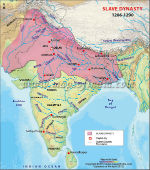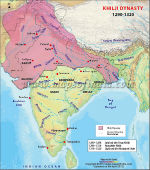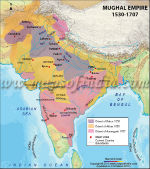Delhi History
History of Delhi enumerates a saga of various dynasties like the Mughals, Khilji and Tuglaks who once ruled this city. The first ever evidence of Delhi can be traced back to the times of Mahabharata in 1400 BC when it was known by the name of Indraprastha. However, it is said that Anagpal Tomar first laid the foundation stone of the seven ancient cities of Delhi much before the 13th century.
Prithviraj Chauhan played a major role in shaping the history of Delhi. In fact, he was the last Hindu Emperor, who ruled the city of Delhi. After this great Hindu ruler, Qutub-ud-din-Aibak of Turkish origin propounded the Slave Dynasty in Delhi that lasted from 1211 to 1227.
The Khilji Dynasty started in Delhi just after the end of the Slave Empire. From 1296 to 1316 Khilji Dynasty ruled Delhi and also established the Siri city within its premises. The Tughluqs took the rein of Delhi after the Khilji Dynasty and established the third city called as Tughluqabad.
It is believed that the Mughal Empire had immense influence on the all-round socio-economic development of the city. As a whole, the unique history of Delhi helped in shaping up the political, social, architectural, cultural and economic scenario of India in the ancient times.
Prithviraj Chauhan
Prithviraj Chauhan was the last Hindu king, who ruled the ancient Delhi for a considerable period of time and in the second battle of Tarain in 1192, he lost his kingdom to the Slave Emperors. The Chauhan Dynasty took reign of Delhi city in 1155 AD from the Tomar Empire. Prithviraj Chauhan during his rule changed the name of Lal Kot - built by the Tomars - to Quila Rai Pithora. The rule of Prithviraj Chauhan continued till 1192 AD. The Tarain war of 1192 AD end the rule of Prithviraj Chauhan in Delhi. Mohammad Ghori captured Prithviraj Chauhan in the second and last battle of Tarain and sentenced him to death. This way, the brave rule of Prithviraj Chauhan came to an end in Delhi. Belonging to the Kshatriya Chauhan Rajput Dynasty, Prithviraj Chauhan was a great ruler. From his childhood days, Prithviraj Chauhan was famous for his chivalry and courage. At the age of 13, Prithviraj Chauhan was made the king of Delhi by the then ruler Anagpal. Apart from his brave and courageous ruling life, Prithviraj Chauhan was popular for his love with Samyukta, who was his enemy's daughter. More details >>
The Slave Dynasty
The Slave Dynasty initiated in Delhi in 1193. The Turkish slave of Sultan Muhammad Ghur - Qutb-ud-din Aibak - was the prime figure who invaded the land of India in 1175 and later, started the Slave Dynasty in Delhi.
After the assassination of Muhammad Ghur in 1206, Qutb-ud-din Aibak became the sole ruler of Delhi Sultanate. However, the regime of Qutb-ud-din Aibak could not last long and in 1211, he died of a polo accident. Iltutmish, son-in-law of Qutb-ud-din Aybak, then became the legal heir to the throne of Delhi under the Slave Dynasty. Iltutmish ruled Delhi from 1211 to 1236 and started the use of jital and tanka coins. Iltutmish, before dying, passed his rights to Raziyya - his daughter.
Raziyya remained the only women ruler of Slave dynasty who ruled Delhi. After Raziyya, Balban became the next ruler of Delhi in 1266 representing the Slave Dynasty. Being known for his cruelties and impartial demeanor, Balban established a centralized government system in Delhi during his rule. In 1287, Balban died and the Slave Dynasty came to an end. More details >>
Khilji Dynasty
The Khilji Dynasty started its rule in Delhi in 1290 AD after the death of Balban - the last ruler of slave Dynasty. Jalaluddin Khilji was the first king of Khilji Dynasty who made Delhi his dominion in 1290 AD. However, in 1296 AD, Jalaluddin Khilji was killed out of a conspiracy planned by one of his nephews - Alauddin Khilji.
From 1296 AD to 1316 AD, Alauddin Khilji dominated the Delhi sultanate with many courageous achievements. Soon after becoming the Sultan of Delhi, Alauddin Khilji in 1297 AD went out to win over the various parts of Gujarat state. The assassination of Rajput Hamir was an act of Alauddin Khilji which took place in 1301 AD. In the same year, Ramthambhor was also captured. More details >>
Sayyid Dynasty
Sayyid Dynasty empowered India for about 37 years. Khizar Khan was the founder of the Sayyid Dynasty. He was followed by rulers like Mubarak Shah, Mohammad shah and Alam Shah. Khizar Khan assisted Timur, the restorer of Mongol Empire to invade India. As a reward against his assistance, he was made the governor of a number of Indian territories under the rule of Timurs. Dipalpur, Lahore and Multan were the regions under Khizar's governorship.
However, Khizar's aspirations were higher; he was keener to rule Delhi under the supremacy of Timur. Finally, in the year 1414, Khizar defeated Daullat Khan, the last ruler of Tughlaq dynasty and founded the 'Sayyid Dynasty' in Delhi. In spite of Khizar's victory over Tughlaq Dynasty, he could not sustain and expand the limit of his kingdom and nevertheless started loosing the existing territories of his monarchy.
The Mughals
The Mughals were the founder of the Mughal Dynasty in India. They were the descendants of the great Ghenghis Khan of Afghanistan. The dynasty of the Mughals falls under the Medieval period and give an overview about the history of Delhi. The dynasty was founded by Babur, who invaded India in 1526 on the request of Daulat Khan Lodhi. Ibrahim Lodhi was defeated by Babur in the battle of Panipat, thus, putting an end to Ibrahim Lodhi's autocratic rule.
He established the Mughal Dynasty and ruled India till 1530 AD. The dynasty ruled Delhi with the glorious contribution of the Mughals. After Babur, the throne was succeeded by his son Humayun, who majestically carried the dynasty through distinct features. On Humayun's death, Akbar, his son ascended the throne. Akbar's name is red lettered not only in the history of Delhi but also in the Indian history. Akbar ruled from 1556 to 1605 and spread his territory to the far west of Afghanistan. He is remembered as a kind and generous ruler. Being a Muslim, he respected other religions and won over his subjects. More details >>
Last Updated on : January 14, 2026


